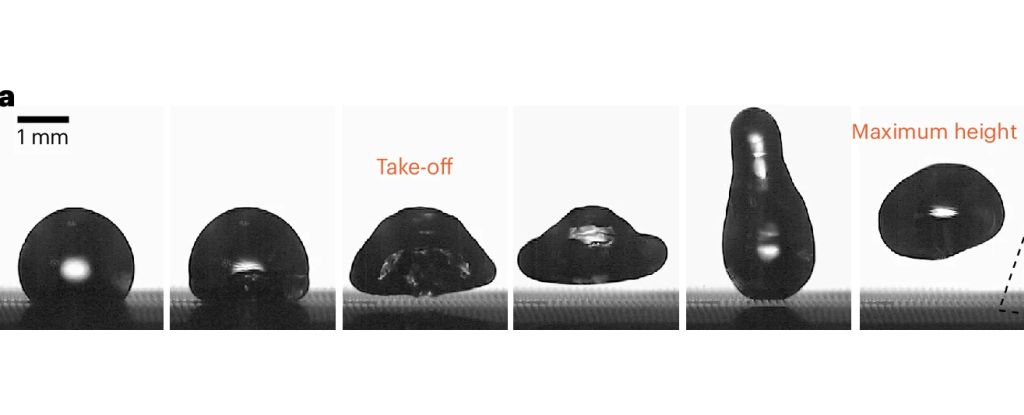If you throw a handful of drops on a very hot pan, you can watch them scurry around and dance.
Believe it or not, these droplets actually float. If a surface is hot enough, the heat will vaporize the side of the droplet closest to it, creating a cushion of gas on which the rest of the droplet floats.
This is known as the Leidenfrost effect, after the German physician Johann Gottlob Leidenfrost, who documented the phenomenon in the 18th century.
Now a team of scientists has come up with a way to lower the temperature at which this little water dance takes place. A surface with a microscopic texture transfers heat to the droplets more effectively, a finding that has implications for heat transfer applications such as cooling industrial machinery and nuclear cooling towers.
“We thought the micropillars would change the behavior of this well-known phenomenon, but our results defied even our own imagination,” said mechanical engineer Jingtao Cheng of the Virginia Polytechnic Institute and State University.
“The observed interactions between bubbles and droplets are a major discovery for boiling heat transfer.”
frameborder=”0″ allow=”accelerometer; autoplay; clipboard writing; encrypted media; gyroscope; photo within photo; web-share” referrerpolicy=”strict-origin-when-cross-origin” allowfullscreen>
We have known about the Leidenfrost effect for some time and its parameters are well known. For this to happen, it requires enough heat that the water immediately forms a vapor upon contact with the stovetop, but not so much heat that the entire drop of water instantly evaporates.
The reason the water does not completely evaporate at Leidenfrost temperatures is because much of the energy from the hot surface is carried away as vapor, rather than entering the rest of the drop.
The surface that Cheng and his colleagues devised consists of hundreds of tiny pillars about 0.08 millimeters high, about the width of a human hair. These are arranged in a grid, separated by a distance of approximately 0.12 millimeters. When placed on the surface, a drop of water covers about 100 of the pillars.
As the water sits on the surface, the pillars press into the water droplet, imparting more heat inside and causing the water to boil faster. This means that the Leidenfrost effect can be observed within milliseconds and at much lower temperatures than on a flat surface such as a stovetop or frying pan.
The team was even able to induce Leidenfrost levitation at 130 degrees Celsius, much lower than the 230 degrees Celsius they believed was typical of the effect under these conditions.
Now water is an excellent medium for cooling. Water boils and evaporates at about 100 degrees Celsius (it varies slightly by altitude). Liquid water cannot be hotter than this boiling point because it turns into vapor.
That’s why this person was able to cook soup in a plastic bag over a fire: the heat is transferred to the water, which cannot exceed the melting point of the plastic (note: don’t do this, there are chemicals in plastic that you don’t want your soup).
The micropillar surface therefore offers a more efficient heat transfer mechanism that could be a lot safer than water cooling technologies currently in use, the researchers say, and help prevent dangerous accidents such as vapor explosions.
“Vapor explosions occur when vapor bubbles in a liquid expand rapidly due to… [presence of an] intense heat source nearby. An example of where this risk is particularly relevant is in nuclear power plants, where the surface structure of heat exchangers can influence the growth of vapor bubbles and potentially cause such explosions,” says engineer Weng Huang of Virginia Tech.
“Through our theoretical exploration in the paper, we investigate how surface structure influences the growth mode of vapor bubbles, providing valuable insights into controlling and reducing the risk of vapor explosions.”
The team’s research has been published in Natural physics.
